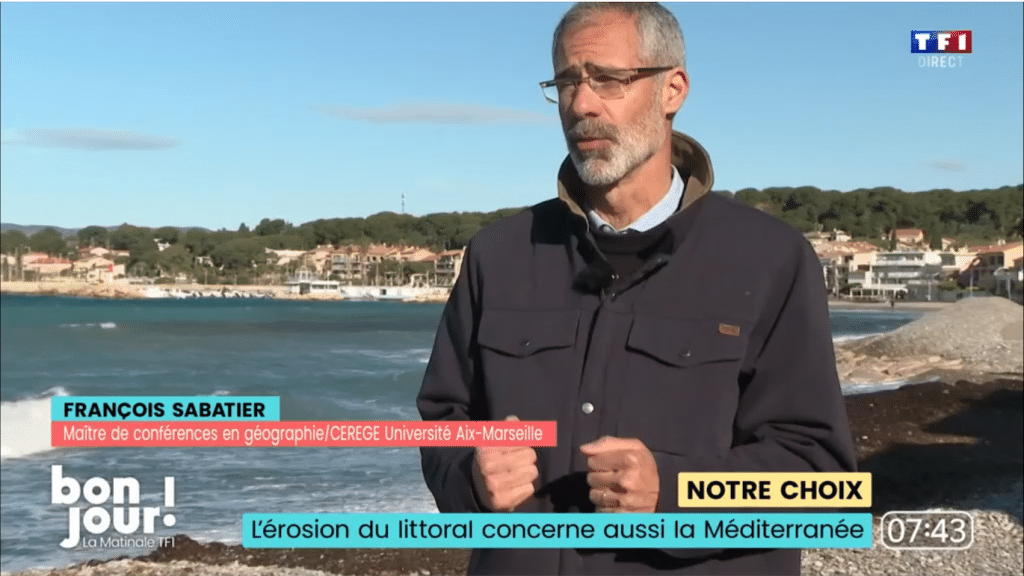Coastal erosion is a phenomenon that spares no coastal Member State of the European Union. In 2004, around 20,000 kilometres of coastline, representing 20 % of the Union's total coastline, were particularly affected by this phenomenon (Eurosion report, 2004).
On a regional scale, the PACA region is considered to be highly exposed to the risk of coastal erosion. This assessment is based on the density of the population living within the area of influence of coastal erosion, the presence of industrial zones and areas of high ecological value, and the growth of coastal urban areas between 1975 and 1990 (Eurosion report, 2004).
In response to this threat, the seafronts of urban, tourist or industrial areas have generally been developed by means of dykes, breakwaters, jetties or other rock-fill structures designed to protect buildings or other assets located on the coast.
However, most of the studies carried out in the French Mediterranean (Sabatier, 2001, Samat, 2007, Suanez, 1997, Certain, 2002, Durand, 1998) have highlighted the negative environmental impacts of 'hard' developments (seawalls, groins, breakwaters), most of which were built during the first phase of coastal development (between 1970 and 1990), at a time when the urgency and lack of in-depth knowledge of the erosion phenomenon justified major interventions.
These studies have demonstrated the ineffectiveness of these methods beyond a certain period, and even the existence in the medium term of aggravating effects on erosion induced by these developments. These negative impacts are compounded by landscape nuisance and site pollution when sites are not maintained frequently.
Since 1986, the French Coastal Act, which aims to achieve sustainable coastal development, has prohibited the reconstruction of protective structures that have been shown to have an aggravating effect on erosion, while favouring operations that are "experimental or exemplary in terms of the method used". In theory, therefore, the new directives sound the death knell for "hard engineering" in the case of coasts with high environmental or economic stakes.
There are several "families" of alternative solutions to "hard engineering" (UK-CHM Report, 1999), depending on their modes and areas of action and the desired effect on the coastline. However, the use of alternative methods remains largely anecdotal on French coasts, for a variety of reasons:
These methods are not well known by coastal managers, who are often sceptical about their effectiveness and prefer traditional methods.
As a result, they are rarely used and lack experimental validation.
They also have a high cost, due in particular to the field studies required prior to their implementation, but also to the lack of widespread use of this type of process due to their specialisation (targeted action), which distinguishes them from "hard engineering".
Read the rest of the article, Méditerranée (Geographical review of Mediterranean countries))



